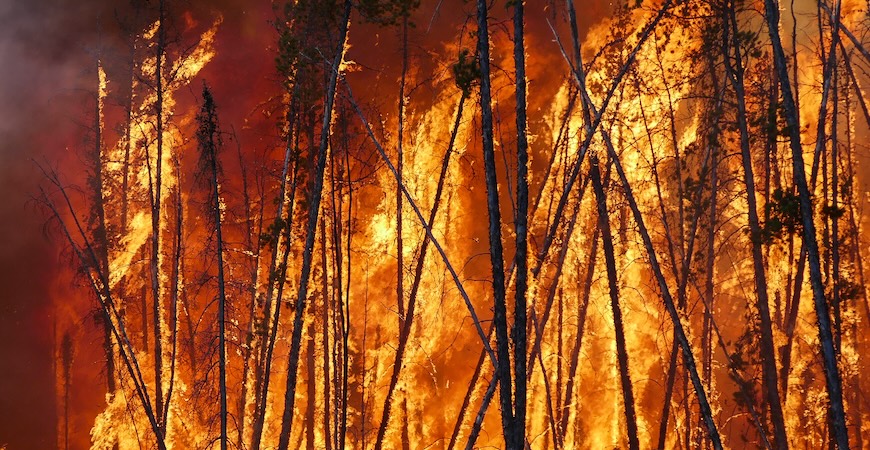
A major study publishing Friday in Science reveals that carbon dioxide emissions from forest fires have surged by 60% globally since 2001, and almost tripled in some of the most climate-sensitive northern boreal forests.
UC Merced faculty John Abatzoglou and Crystal Kolden were part of a research team led by the University of East Anglia in England. The team grouped areas of the world into "pyromes" — regions where forest fire patterns are affected by similar environmental, human and climatic controls — revealing the key factors driving recent increases in fire activity.
Increased emissions were linked to a rise in fire-favorable weather, such as the hot, dry conditions seen during heat waves and droughts, as well as increased rates of forest growth, creating more vegetation fuels. Both trends are aided by rapid warming in the high northern latitudes, where it is happening twice as fast as the global average. One of the largest pyromes, which spans boreal forests in Eurasia and North America, saw emissions from fires nearly triple between 2001 and 2023.
"Our planet's temperate and boreal forests are under fire as the Earth continues to warm," said Abatzoglou, a professor in the School of Engineering. "Fire activity is the result of complex interplay of factors, but the growing prevalence of fire-conducive weather has exacerbated the scale of wildfires."
The study reveals a concerning increase not only in the extent of forest wildfires over the past two decades, but in their severity. As fires burn hotter, forests are burning more completely, and today are releasing about 50% more carbon per unit burned area than at the beginning of the 2000s.
California and the western U.S. have seen numerous wildfire disasters in the last decade, including the 2018 Camp Fire, which killed 85 people. This study shows that not only are these wildfires destroying human lives and property, they are also increasingly emitting carbon at higher rates than previous decades.
Forests are of worldwide importance for carbon storage, with their growth helping to remove carbon from the atmosphere and reduce rates of global warming. The success of forest carbon offset projects relies on carbon being stored in forests permanently, and wildfires threaten that. Fires outside the tropics are already emitting half a billion tons more carbon dioxide than two decades ago, and the long-term effect depends on how forests recover.
"Increasing extratropical wildfires are also contributing substantial levels of smoke to produce hazardous air quality events, as we saw across California in 2020 and in the northeastern U.S. during the 2023 Canada fires," noted Kolden, director of the UC Merced Fire Resilience Center.
Importantly, the study shows that while global area burned is decreasing due to declining burning of tropical savannahs, the increase in fire in extratropical regions is ultimately pushing wildfire carbon emissions higher. This highlights the need to restore and maintain forest health in western U.S. forests that historically burned more frequently but at lower intensity.
"We know that fire suppression in frequent-fire forests led to a build-up of fuels that results in carbon-emitting megafires under extreme fire weather, and the conditions for such fires are occurring more frequently due to anthropogenic climate change," Kolden said. "But we also know that reducing the density of trees through prescribed fire and understory fuel reduction projects can mitigate high severity fire and increase carbon storage, even with climate change.
"Fewer, bigger trees hold a lot more carbon and are much more resistant to burning than many smaller ones."
The work was supported by multiple funding agencies globally, including the National Science Foundation.




 Public Information Officer
Public Information Officer

